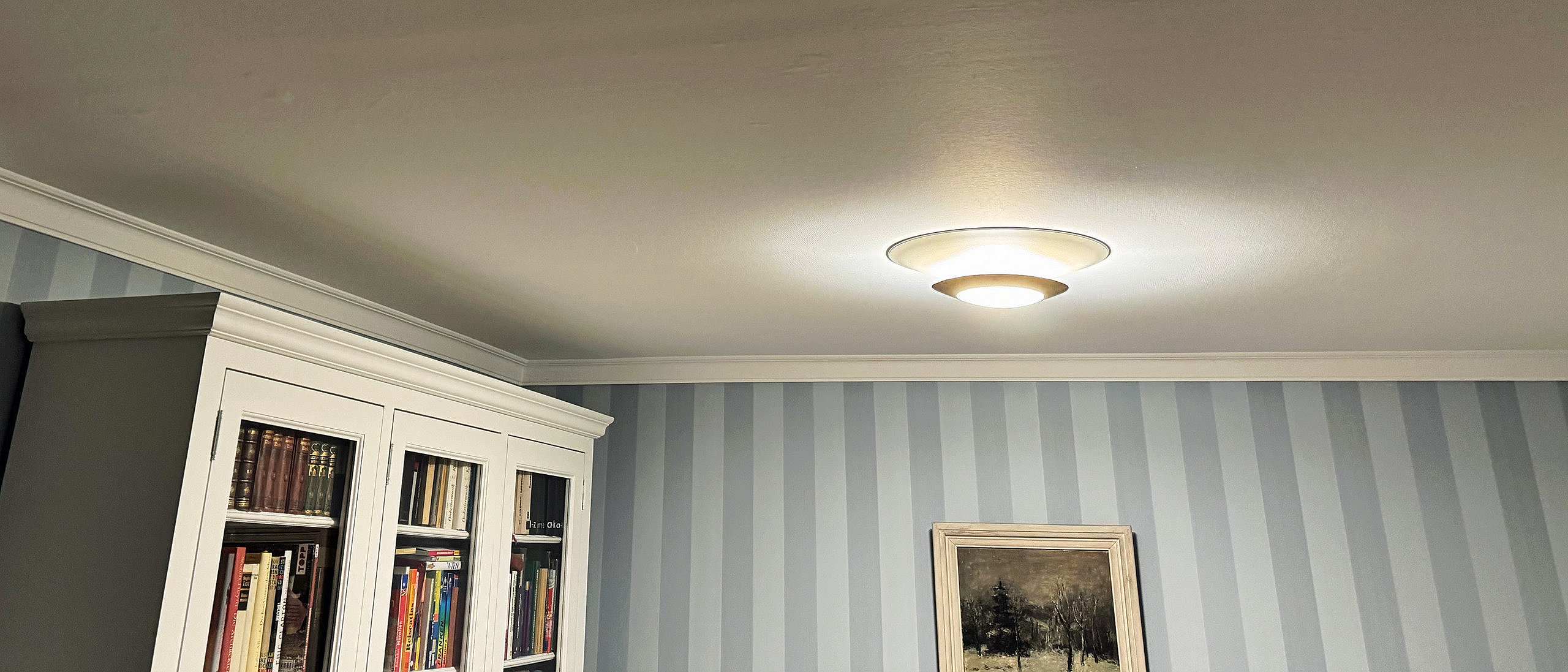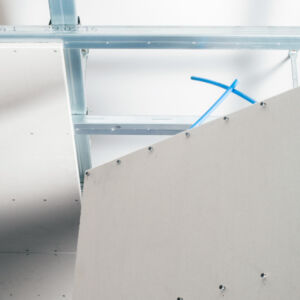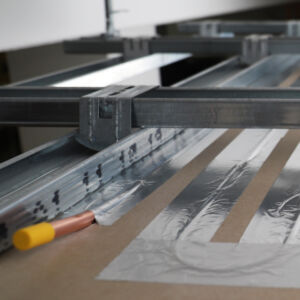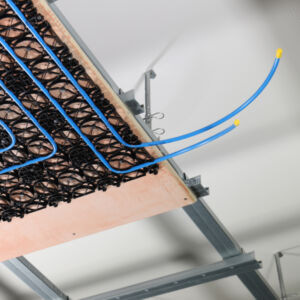Retrofit Ceiling Heating in Old Buildings
The benefits of ceiling heating for retrofitting
Ceiling heating realises the principle of radiant heat most rigorously. The temperature is distributed extremely evenly across the height of the room. The absorption of the radiant heat from above by the floor also ensures a pleasantly high temperature in the foot area. The low flow temperature saves energy. These properties have made ceiling heating the most popular solution for controlling the temperature of office spaces in new buildings.
At the same time, ceiling heating offers considerable potential for retrofitting in older buildings. Why? Old buildings typically have considerable ceiling heights of 3 metres and more. This is plenty of space to retrofit ceiling heating, which can be installed in drywall construction with a minimum distance from the ceiling of 5 cm, without major intervention in the fabric of the old building. The plaster version has an even lower installation height. The original floorboards or parquet flooring can be retained. Installation does not require any major preparatory work. The ceiling is generally unobstructed and ensures unhindered heat radiation. Lamps can be easily installed by planning in standard elements without heating pipes.
Ceiling heating can be retrofitted room by room and operated with all standard heating systems via an RTL control box. The return temperature control prevents the heating water temperature from exceeding the permissible flow temperature for panel heating systems. If additional rooms are retrofitted at a later date and the heat source with low flow temperatures is replaced, the ceiling heating can be retrofitted to a heating circuit manifold.
An additional benefit of ceiling heating: the function as a cooling ceiling
With a suitable chilled water supply, the retrofitted ceiling heating can also be operated as a ceiling cooling system. In this way, a single system provides an air-conditioned ceiling that ensures a comfortable indoor climate all year round. Because the cooling works quietly and without the draughts of an air conditioning system, the combined heating and cooling ceiling is often installed in hospitals.
For small cooling surfaces, control is based on the flow temperature. The Multibox thermostat is set to the highest value. A chilled water temperature of 18-20°C is sufficient for most applications. Retrofitting ceiling heating in old buildings offers the possibility of maintaining a comfortable room temperature even in summer.
Where does the cooling water for the ceiling cooling system come from?

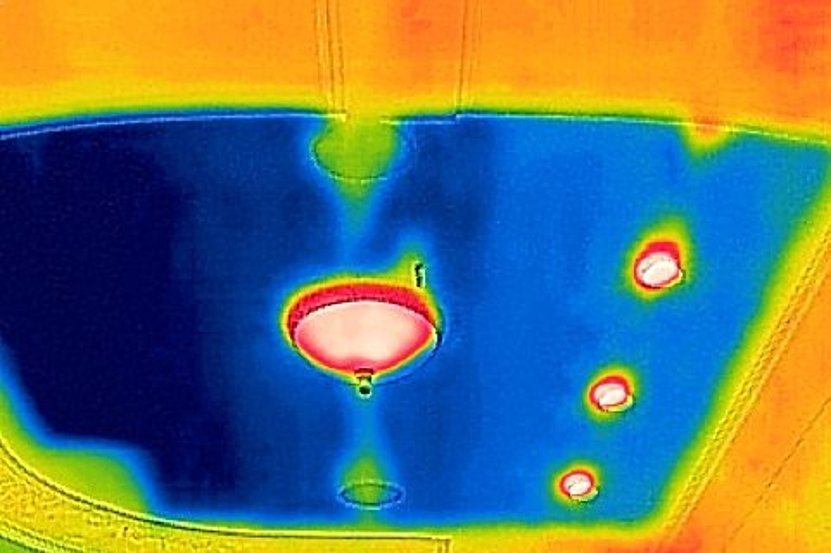
Thermographic images of heating and cooling operations
Easy installation of ceiling heating in drywall construction
Not experienced with drywall ceilings? No problem. Our easy-to-follow video shows you how to install a drywall ceiling heating system in just 3 minutes. Each kit comes with detailed installation instructions.
Plaster, drywall or copper pipe heating ceiling?
Plastering method
add_circle
Clay, lime or gypsum plasters can be used. This allows the specific properties of the plaster to be exploited. High heat output. Low construction height.
highlight_keyboard_focus
Plastering brings moisture into the room. The final work on the ceiling surface is delayed.
Dry construction
add_circle
Ceiling surface can be quickly produced and further processed. Prefabricated construction elements. Standard dimensions.
highlight_keyboard_focus
Minimum distance from ceiling required for plug-in connections. Slightly lower heat output than plaster version.
Copper pipe
add_circle
More heating power, fewer heating elements may be required for the room size. Quick installation of the prefabricated heating elements thanks to standard dimensions.
highlight_keyboard_focus
Higher initial cost. Available for drywall construction only.
Ceiling heating kits
forum
Yes, it is possible to use the ceiling heating kit for cooling in summer. Sufficient cool water supply is required though. Further details can be found at: How to use a ceiling heating as cooling ceiling.
If there is an unheated room above the ceiling activated with FLEXIRO and the old ceiling has no thermal insulation or the heat transfer coefficient of the ceiling is unknown, we recommend adding an additional insulation layer. In any case, thermal insulation above the ceiling heating will shorten the reaction time of the heating.
The substructure for the ceiling heating should comply with the dry construction guidelines for suspended ceilings. When using CD profiles and direct hangers, a suspension height of approx. 5 cm can already be sufficient. A small distance to the raw ceiling is also required for the installation of the FLEXIRO connection pipes and plug connections. The dry construction guidelines also permit the use of wooden beams as a substructure for the plasterboard. However, their stability and torsional stiffness is usually less good compared to CD profiles made of metal.
